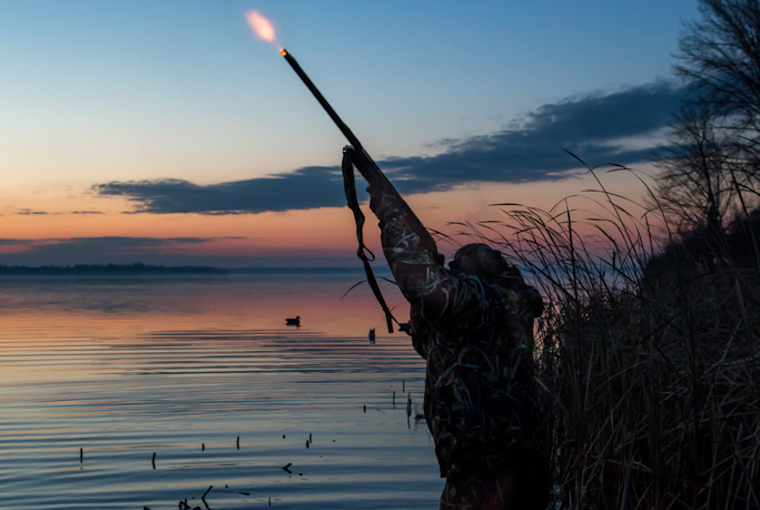
For many hunters, the act of shooting involves squeezing the trigger and hanging on until the world comes back into focus. Firearm recoil can be painful and alarming, particularly for new or young shooters. So, what causes it, why do people dread it and, most importantly, what can be done about it?
The two parts of gun recoil
Before digging into methods of affecting and controlling recoil, it is beneficial to understand what is actually going on. Let’s take a look at the physics involved. If you are having flashbacks to high school science, don’t worry, there won’t be a pop quiz.
Basically defined, recoil is the rearward movement of a gun during firing. The law of conservation of momentum defines why we experience recoil. It states that the momentum of a system of objects, like a loaded gun, must always be the same. This is accomplished through every physical action having an equal and opposite reaction (Newton’s third law of motion). This opposition cancels out any change in system momentum. Recoil is therefore a reaction to the action of firing a round downrange. It can be separated into two forms.
Primary recoil
When the propellant charge is ignited, the expanding gases apply equal force to the bullet and gun, driving them in opposite directions. The bullet heads downrange and the gun into the shooter’s shoulder. The bullet, being light, accelerates rapidly and achieves a high velocity. The rifle, being heavy, accelerates slower and achieves a much lower velocity. Despite this, they carry equal momentum. Rearward gun movement, generated in opposition to the bullet’s movement, is known as primary recoil.
Secondary recoil
Once the bullet leaves the barrel, the remaining pressurized gases are released out of the muzzle at high velocity. These gases have mass, so they too have momentum. Like a jet engine, this generates thrust, propelling the rifle rearward with enough counter-momentum to maintain system balance. Rearward gun movement, generated in opposition to the gas’s movement, is known as secondary recoil.
Firearm recoil is experienced as a singular event, but it is generated by the combination of these two distinct interactions. It should come as no surprise then that the more powerful a cartridge is, the more recoil it will have.
A punch vs. a shove
The duration of the recoil event is also important. The time over which recoil force is generated depends on the length of the barrel, the bullet’s rate of travel down the bore, and the time it takes for gas jetting to subside. Fast- shooting rifles generate recoil in short, sharp bursts that feel like getting punched. Slow-shooting guns, such as shotguns, generate recoil in a long, sustained push, much like a hard shove. Both can be rough on the body.
Whether shooting a rifle or shotgun, the basic physics is the same. Many small physical interactions happen when a gun is fired, absorbing and redirecting energy out of the process and therefore the recoil equation. Most aren’t controllable or aren’t significant enough to worry about.
Semi-automatic firearms are an exception. They noticeably reduce recoil by diverting energy into cycling actions. In gas-driven designs, this reduces secondary recoil, whereas inertia-driven actions spread primary recoil over a greater duration. The momentum of moving action parts in semi-automatic firearms also changes the feel of recoil by introducing counter-recoil forces.
3 ways to reduce recoil
Let’s look at how we can reduce the kinetic energy that a recoiling gun carries (also called free recoil energy). Mass and velocity contribute equally to the momentum equation, but kinetic energy is highly dependent on velocity. This means a heavy, slow-moving gun will have less free recoil energy than a light, fast-moving gun when their momentum is equal.
1. Up your gun weight
Here’s what happens when we increase gun weight from 7.5 to 8.5 pounds for a given cartridge. Keep in mind, if you’re a hunter who avoids the stand or blind, an 8.5 pound gun can be a pain to carry around. If you’ll use the gun for target shooting, it might be worth using that heavier stock or scope.
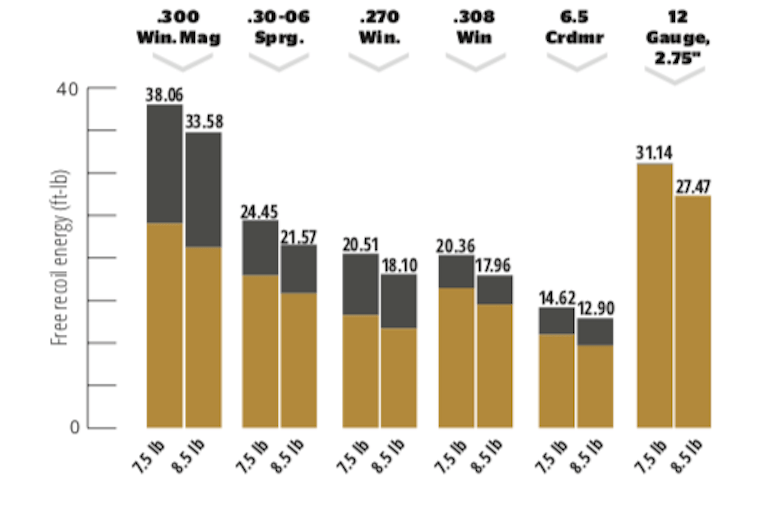
2. Choose a heavier bullet/shot
Here’s what happens when we choose heavier bullets or shot. Note that this will often reduce muzzle velocity minimizing any change.
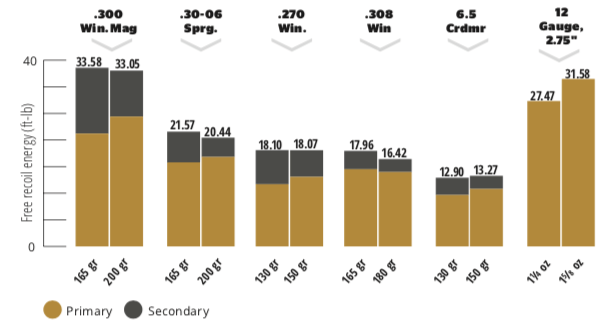
3. Dump that gas
Secondary recoil can be reduced by redirecting some of the jetting gases using a muzzle brake. The effectiveness of a muzzle brake depends on how much gas it redirects and the angle of redirection. Gases redirected perpendicular to the line of the bore no longer generate rearward thrust. A well- designed brake with rearward-angled ports can even generate some forward thrust, increasing performance. Conversely, some radial brakes have forward-angled ports that still contribute to rearward thrust and are not particularly effective.
As seen in our calculated recoil examples, the amount of secondary recoil generated during firing is very cartridge-dependant and usually doesn’t exceed 40% of total recoil force; shotguns generate almost no secondary recoil at all. A brake’s effectiveness in reducing this type of recoil is therefore inherently limited. Likewise, barrel length affects the amount of residual gas pressure that a brake has to work with. As such, brakes will be more effective on shorter barrels than longer ones.
3 ways to absorb recoil
Now that we understand how to reduce free recoil energy, the next step is managing it on the receiving end. This is done by slowing it down, spreading it out, and letting it flow.
1. Slow it down
In-stock devices, like the Dead Mule from 100 Straight or the Edwards Recoil Reducer, absorb energy through the displacement of weights or heavy liquids during recoil. The effect is similar to an inertia-driven semi-automatic action.
Recoil pads and recoil-reduction stocks, such as Benelli’s Comfort Tech design, absorb energy through material deformation. These technologies also spread the delivery of recoil energy over a greater period of time, decreasing the amount of force the shooter must cope with at any given instant. With recoil pads, maximum energy absorption and delay of its delivery occurs when the pad compresses under recoil to the point of nearly bottoming out, but not beyond.
2. Spread it out
Force delivered over a small surface area can pack some serious wallop. The larger the footprint of your butt plate or recoil pad and the more contact it has with your shoulder under load, the less force is exerted per square inch. For this reason, poor gun fit is a frequent contributor to recoil-induced pain. When checking how a gun fits, be sure to assess the amount of contact the butt has with your shoulder while holding a proper sight picture.
3. Let it flow
If you ever get the chance to watch someone shoot prone, observe the shockwave of recoil energy move through their body. If their positioning is natural, allowing them to be relaxed, you can watch it ripple from the shoulders, down into their legs. The benefit is that the recoil energy is absorbed over a much greater portion of the body and over more time, reducing its effect. This applies to all shooting positions. If your stance or the fit of your gun requires you to tense or contort your body to hold a proper sight picture, you can expect your shoulder to take the brunt of the force.
Regardless of shooting position, the gun and body should be in contact so that they move together under recoil. Failing to do so allows the rifle to freely accelerate rearward, out of sync with your body. With a scoped rifle, you may find yourself an involuntary member of the pirate eye-patch club. Getting scoped in the eye isn’t fun. Neither is the laughter of your hunting buddies.
Originally published in the July 2022 issue of Ontario OUT of DOORS


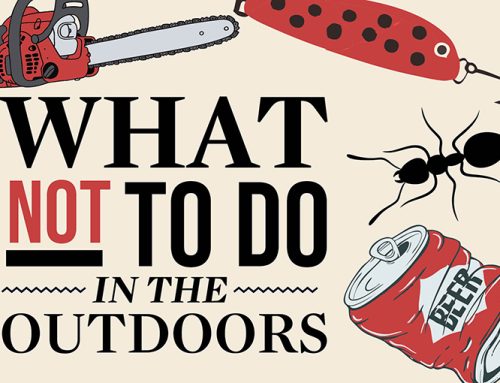
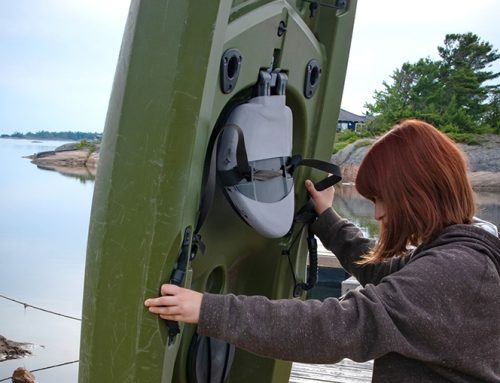

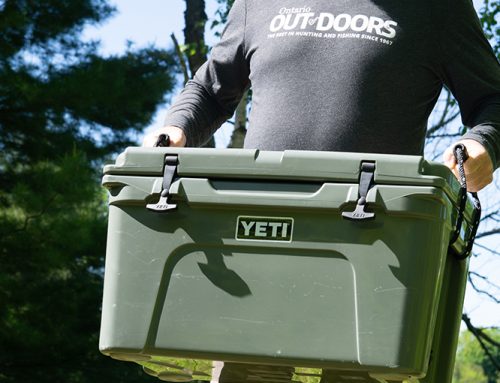
Leave A Comment